THE EISENERZER REICHENSTEIN – AN EXTRAORDINARY EASTERN ALPS WILDFLOWER MOUNTAIN IN THE NEIGHBORHOOD OF THE “STYRIAN LOAF MOUNTAIN”
Christian Berg, 30 August 2017, Institute of Plant Sience – University of Graz

Three things are needed for a great seed-collecting trip: a species-rich location, the right time, and nice weather! All this we found from 23-25 August 2017 at the Eisenerzer Alps, 60 km northwest of Graz.
The Eisenerzer Alps are a substantial part of the greywacke zone, a band of Paleozoic metamorphosed sedimentary rocks between the granite basement rocks of the Central Eastern Alps and the Mesozoic rocks of the Northern Calcareous Alps. As mountain-forming material we find phyllites, shale, metamorphic volcanic rocks, weakly metamorphic limestone (marbles), quartzites, and less common, graywacke.
The zone is rich in mineral resources (iron, copper, magnesite, graphite, etc.), and near the city of Eisenerz we find the “Styrian Erzberg”, a giant open-pit mine. Erzberg represents the largest iron ore reserves in Austria, having estimated reserves of 235 million tonnes of ore in form of the mineral Siderite (iron-2-carbonate). Since the 19th century, Erzberg was the basis of a remarkable economic development of iron producing and processing industry in a previously extremely poor and underdeveloped country, giving it the name “Styrian loaf mountain”. The price was the loss of a singular mountain ecosystem leaving an open wound in the landscape.
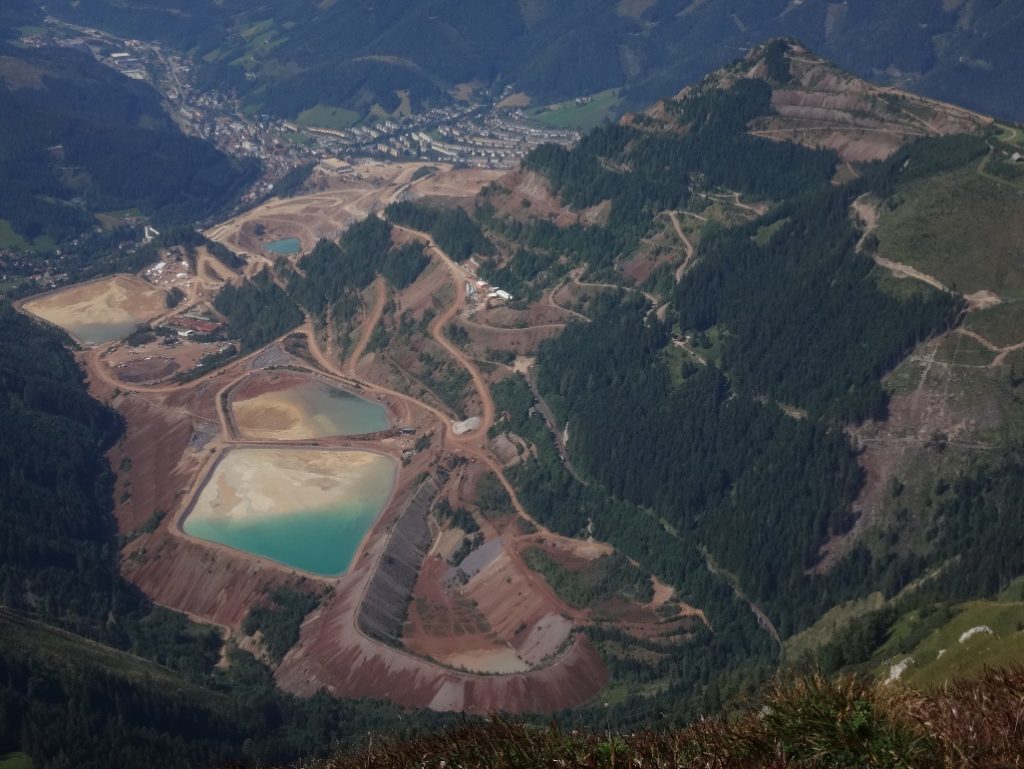 |
| The (former) Styrian Erzberg, a centuries-old giant open-pit iron ore mine, called the “Styrian loaf mountain” as it was source of economic development and welfare for the whole region. |
The next mountain southwards, the 2165 m high Eisenerzer Reichenstein, still exists in all its beauty and biodiversity. We visited this mountain from 23-25 August, during the fifth heatwave of the Austrian summer this year.
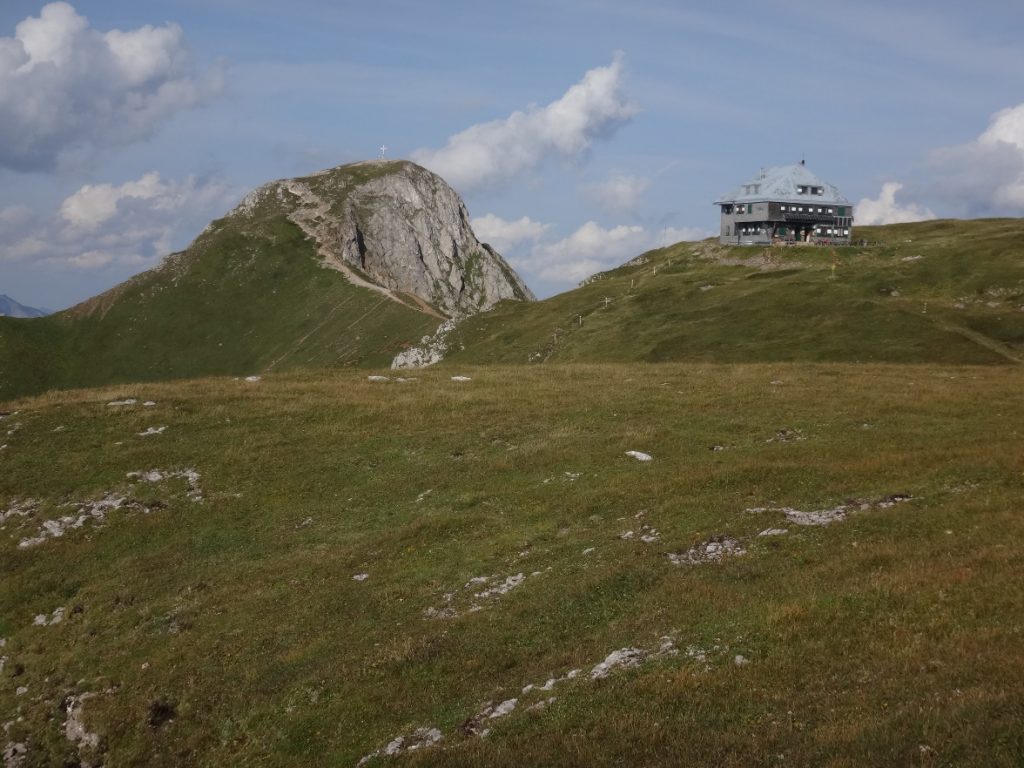 |
| Eisenerzer Reichenstein peak with the Reichensteinhütte |
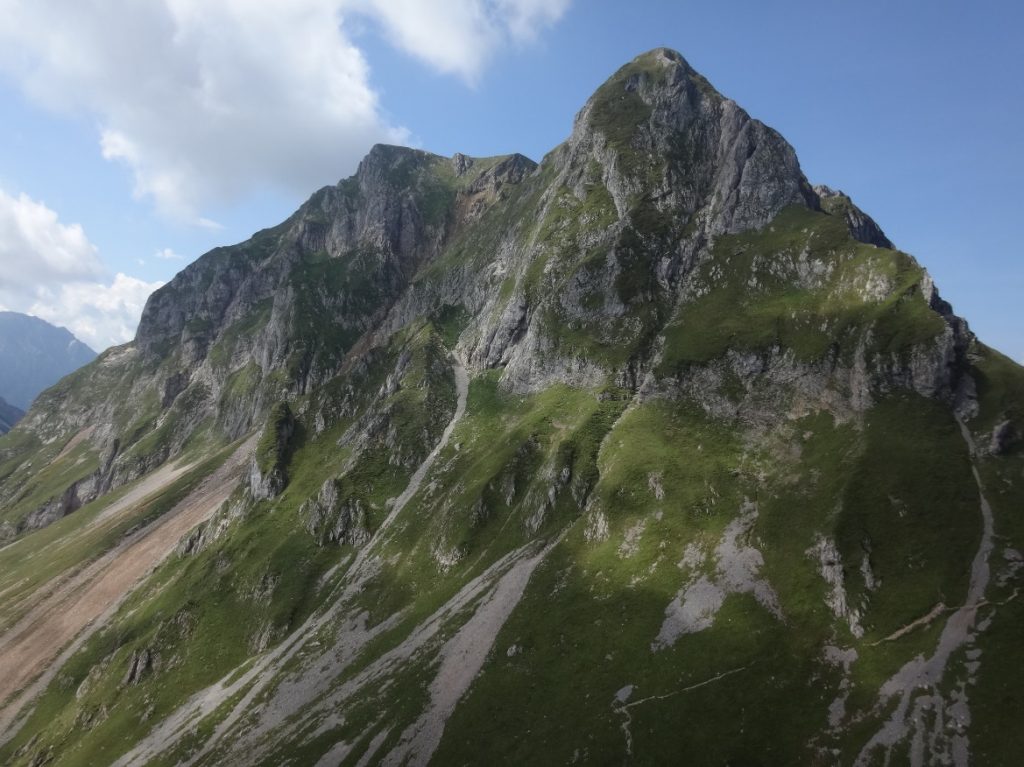 |
| Eisenerzer Reichenstein viewed from the east |
A light blue sky and low wind enabled us to collect seeds of 20 different species during three days, an extraordinarily large number of species in such a short space of time. This was in stark contrast to 2016, where diverse thunderstorms swept us from the mountains without any collecting success, so we wanted to share this year’s remarkable success in this short report.
Together with Matthias Kaltenböck, a student of plant science of Graz University, we found accommodation in the Reichensteinhütte, a woody hut of the Leoben section of the Austrian Alpine Association only a few meters below the summit. No roads or funicular supply this hut; pedestrians or helicopters bring in all materials. Electricity is produced by photovoltaic cells; the water comes from rainwater collection. A remarkable place!
As a result of the small-scale changes in the chemical composition of the rocks in the greywacke zone different rock and soil types are found close together. Most of the stones are more or less base-rich and slightly calcareous, but the weathering produces acidic soils as well, especially near the ridges and peaks. Some plant species we found prefer exactly such intermediate conditions, for example Androsace obtusifolius, Juncus jacquinii, or Pedicularis portenschlagii.
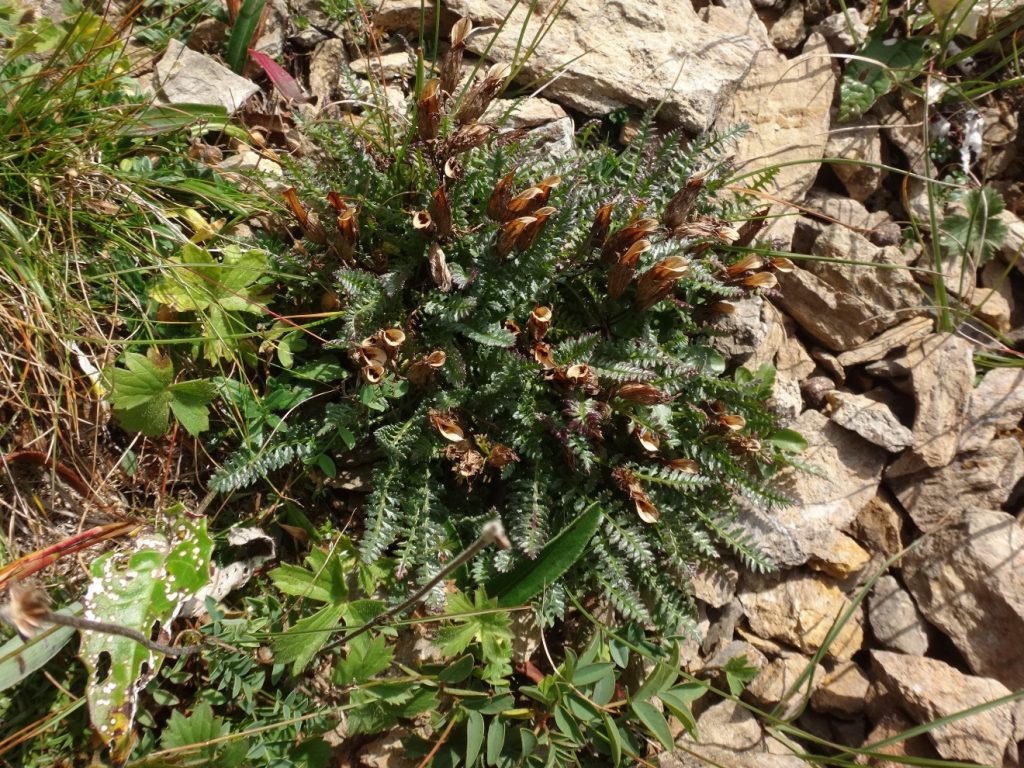 |
| Pedicularis portenschlagii. Seed dispersal was over, but we collected the seeds of this species some weeks before at the Hochschwab. |
Phytogeographically the mountain is part of the Northeastern Calcareous Alps, which harbors its own set of endemics. We managed to see most of them during our three days in the field: Achillea clusiana, Dianthus alpinus, Potentialla clusiana, Primula clusiana, Soldanella austriaca, Saxifraga aphylla.
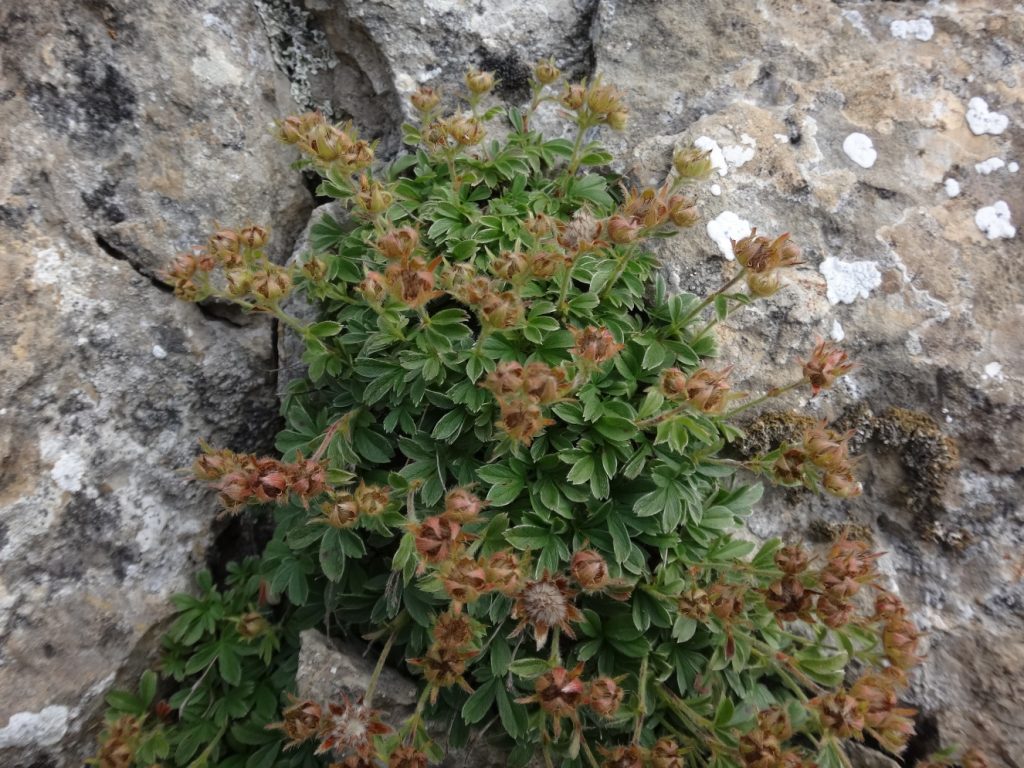 |
| Potentilla clusiana in fruit, one of the endemics of the Northeastern calcareous Alps. |
A high proportion of endemics of the Eastern Alps completes this occurrence of micro-endemics: Arabis bellidifolia, Campanula pulla, Cerastium carinthiacum, Doronicum calcareum, Draba stellata, Galium noricum, Gentiana pannonica, Gentiana pumila, Heracleum austriacum, Saussurea pygmaea, Saxifraga burseriana, Valeriana celtica subsp. norica, and Valeriana elongata.
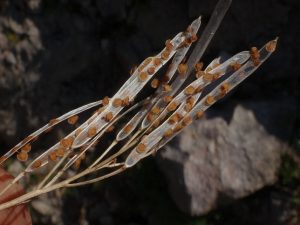 |
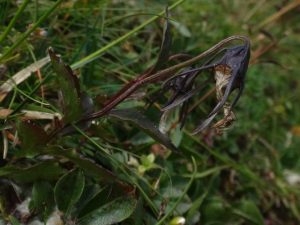 |
| Arabis bellididfolia, at the point of dispersal. The characteristic seed margin of this species is visible. | Campanula pulla with a young fruit capsule. |
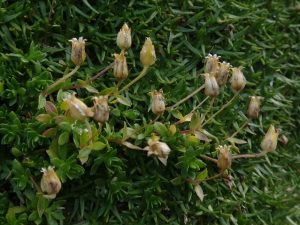 |
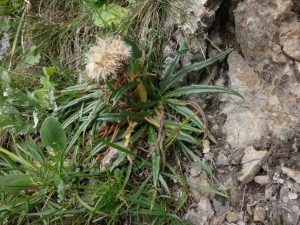 |
| Cerastium carinthiacum, a species of limestone scree vegetation. | Saussurea pygmaea, a lovely species of calcareous alpine grassland. |
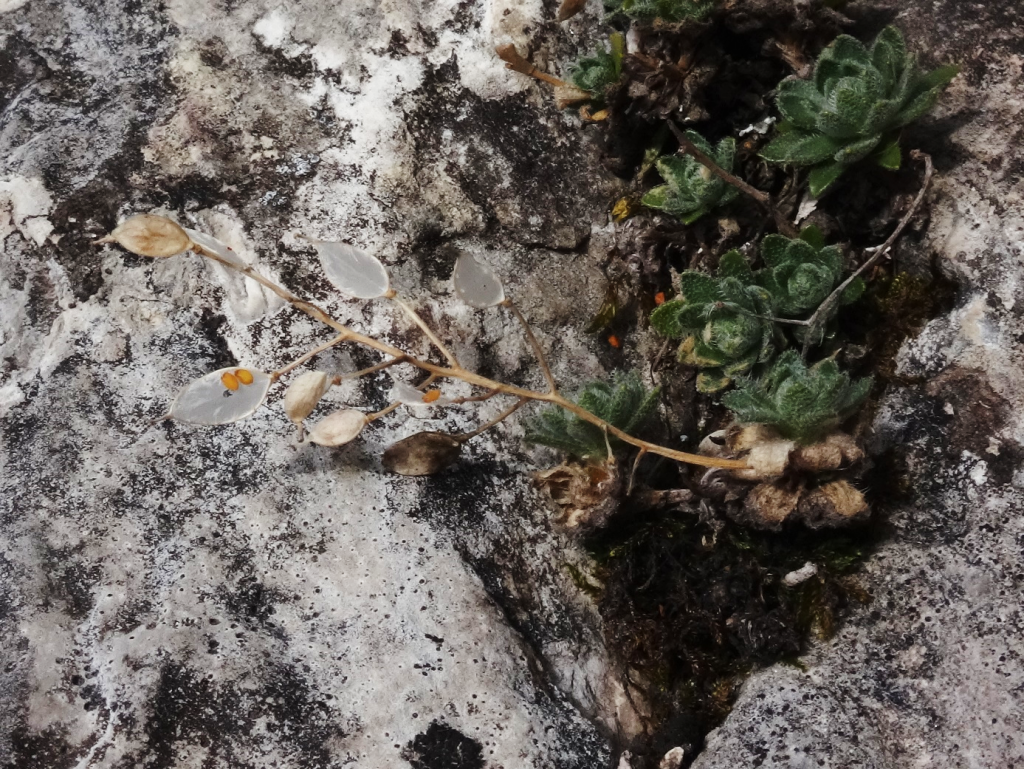 |
| The eastern Alps endemic Draba stellata in a rocky crevice. Some seeds are still available. The long style is specific, distinguishing this species from similar ones. |
In addition to some of this above mentioned species, we also collected seeds from other plants on our collection list with larger ranges: Aster alpinus, Festuca pulchella, Gypsophila repens, Hedysarum hedysaroides, Leontodon helveticus, Leontodon montanus, Linaria alpina, Phleum hirsutum, Phleum raeticum, Saxifraga moschata, and Veronica alpina.
In addition to the three requirements for a great seed collecting trip mentioned at the start, a fourth condition made the trip extraordinary: on the Eisenerzer Reichenstein there are no cattle, only Alpine ibex, chamois and marmots crossed our path. This alpine belt is unspoiled, and the plants have all the time needed to produce fruits and seeds.
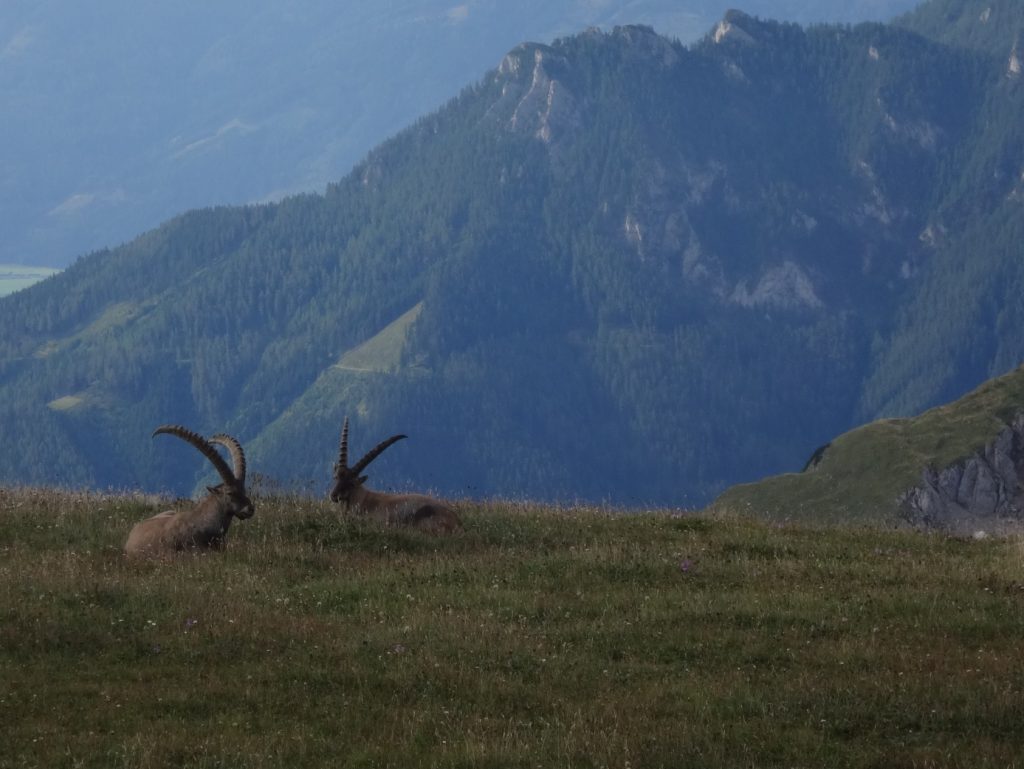 |
| Alpine ibex (Capra ibex) during the early morning. |
Let us share this wonderful botanic and alpine experience with some more pictures:
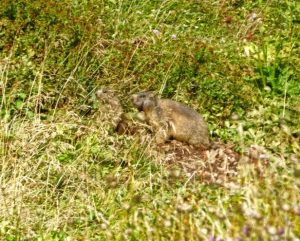 |
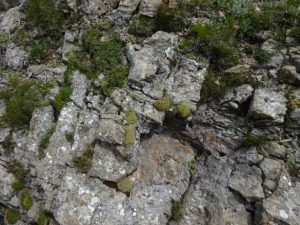 |
| Marmota marmota, always on guard against predators! | The habitats of Androsace helvetica are bare cliffs |
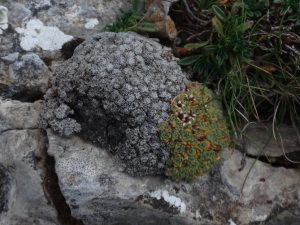 |
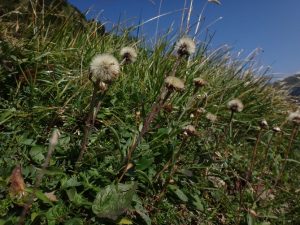 |
| Androsace helvetica, very rare in Styria. Open capsules are visible, but the population was too small to collect, and looked endangered. | Aster alpinus rich in fruit in calcareous grassland. |
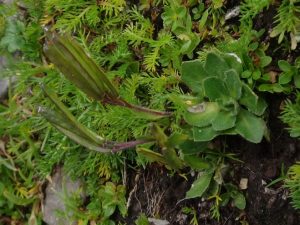 |
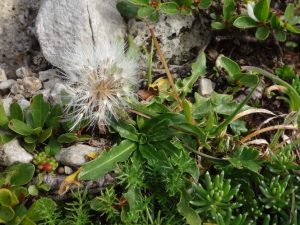 |
| Two characteristic species of alpine snow bed vegetation: Arabis caerulea …. | … and Leontodon montanus, one of the species with white pappus unusual for the genus. |
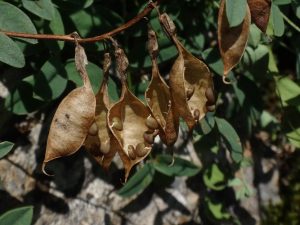 |
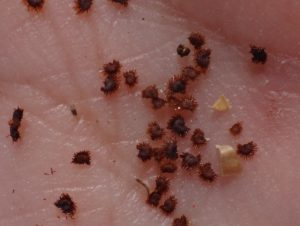 |
| Ripe legumes of Astragalus australis, a species frequent on soils of intermediate bedrock. | Seeds of Silene alpestris in the palm of the collector. New investigations assign it to the genus Heliosperma, a suitable name. |
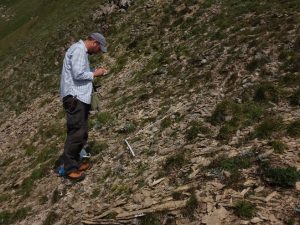 |
 |
| During seed collection, Patrick is recording ecological and vegetation data of the species. | Another rich collecting point, Patrick and Matthias at work. |
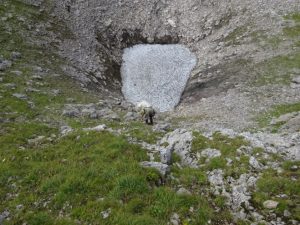 |
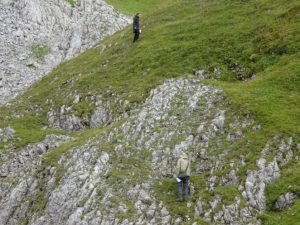 |
| Christian collecting Leontodon montanus and Veronica alpina in a steep doline. | Matthias and Christian searching for Doronicum calcareum |
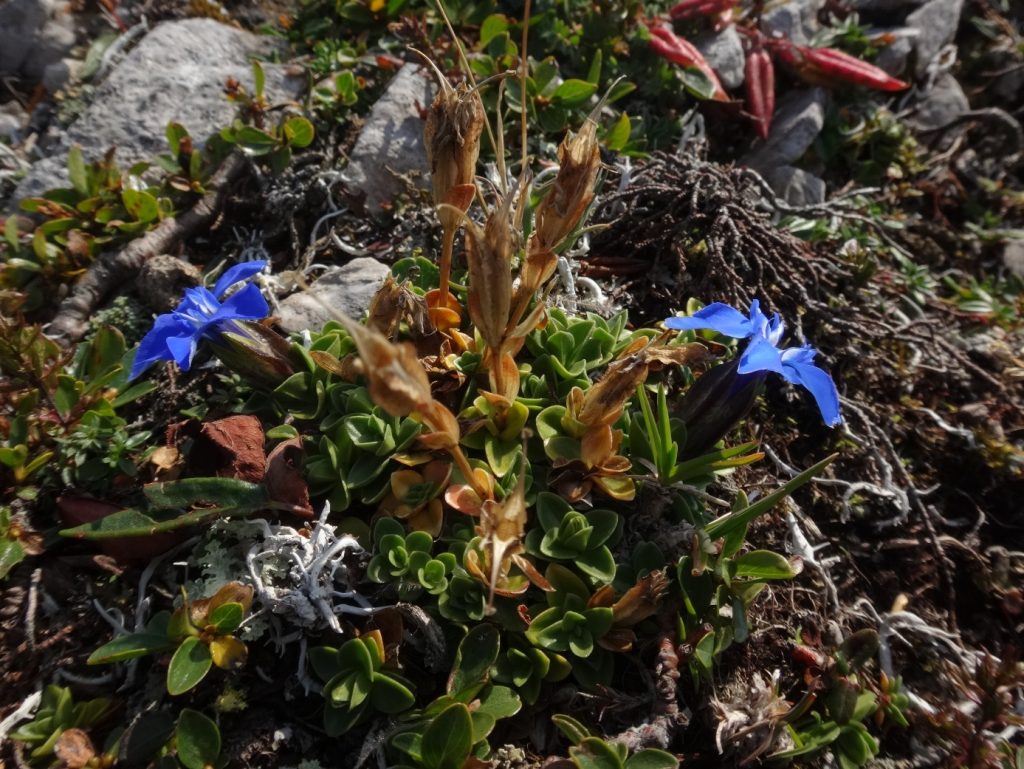 |
| Gentiana orbiculare in flower and fruit, surrounded by Salix retusa, but the population was too small for collecting. In the back right legumes of Oxytropis montana. |
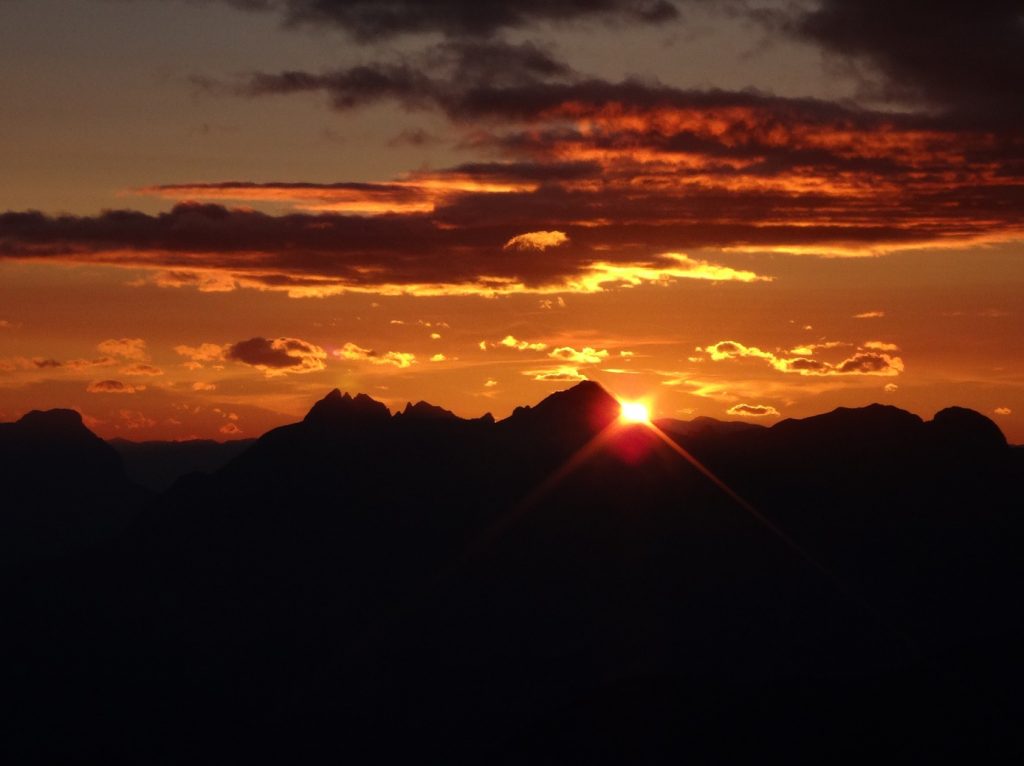 |
| Sunset view from the Eisenerzer Reichenstein westwards, with the Ennstaler Alps and the Gesäuse national park. |